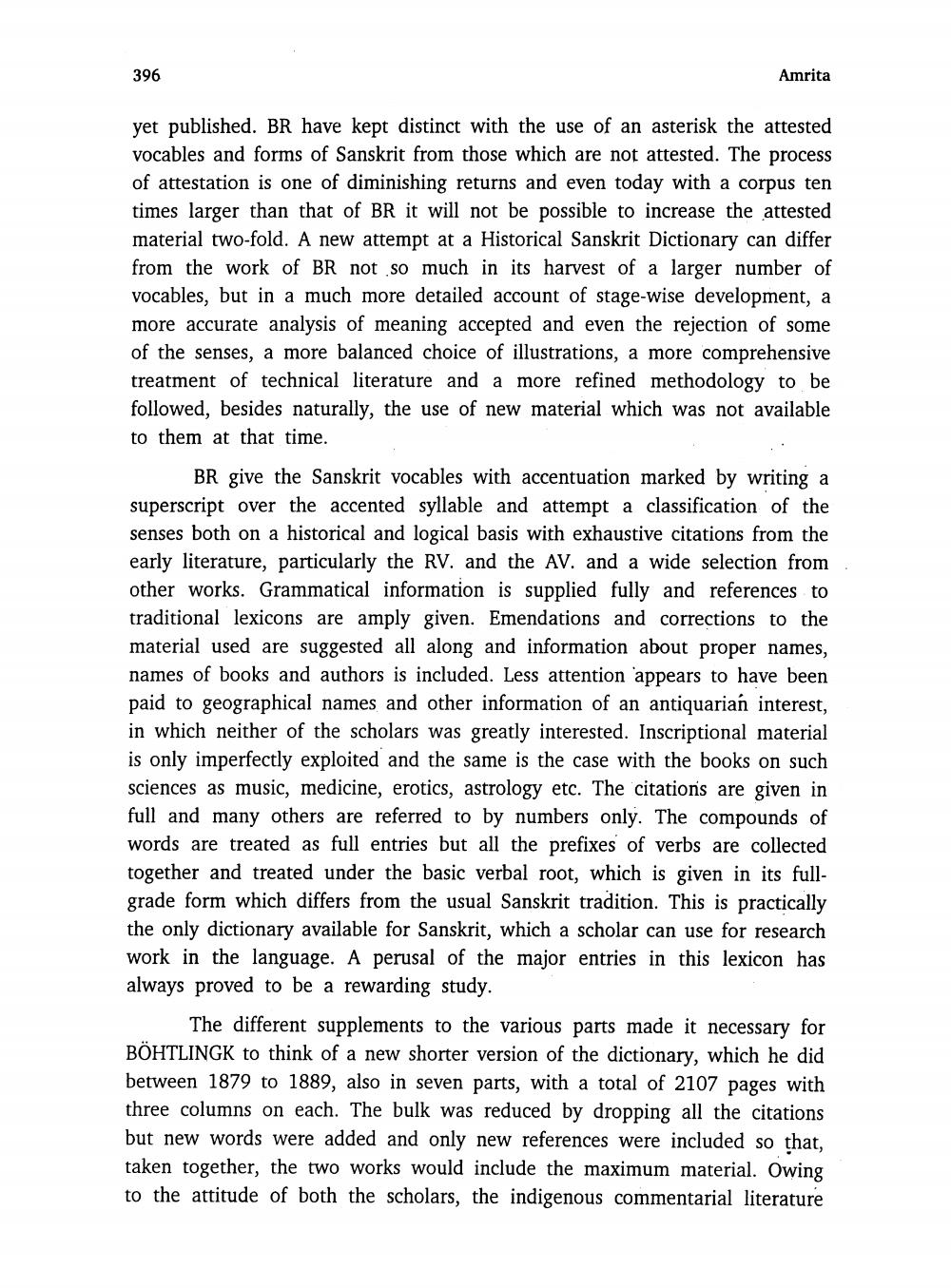________________
396
Amrita
yet published. BR have kept distinct with the use of an asterisk the attested vocables and forms of Sanskrit from those which are not attested. The process of attestation is one of diminishing returns and even today with a corpus ten times larger than that of BR it will not be possible to increase the attested material two-fold. A new attempt at a Historical Sanskrit Dictionary can differ from the work of BR not so much in its harvest of a larger number of vocables, but in a much more detailed account of stage-wise development, a more accurate analysis of meaning accepted and even the rejection of some of the senses, a more balanced choice of illustrations, a more comprehensive treatment of technical literature and a more refined methodology to be followed, besides naturally, the use of new material which was not available to them at that time.
BR give the Sanskrit vocables with accentuation marked by writing a superscript over the accented syllable and attempt a classification of the senses both on a historical and logical basis with exhaustive citations from the early literature, particularly the RV. and the AV. and a wide selection from other works. Grammatical information is supplied fully and references to traditional lexicons are amply given. Emendations and corrections to the material used are suggested all along and information about proper names, names of books and authors is included. Less attention appears to have been paid to geographical names and other information of an antiquarian interest, in which neither of the scholars was greatly interested. Inscriptional material is only imperfectly exploited and the same is the case with the books on such sciences as music, medicine, erotics, astrology etc. The citations are given in full and many others are referred to by numbers only. The compounds of words are treated as full entries but all the prefixes of verbs are collected together and treated under the basic verbal root, which is given in its fullgrade form which differs from the usual Sanskrit tradition. This is practically the only dictionary available for Sanskrit, which a scholar can use for research work in the language. A perusal of the major entries in this lexicon has always proved to be a rewarding study.
The different supplements to the various parts made it necessary for BÖHTLINGK to think of a new shorter version of the dictionary, which he did between 1879 to 1889, also in seven parts, with a total of 2107 pages with three columns on each. The bulk was reduced by dropping all the citations but new words were added and only new references were included so that, taken together, the two works would include the maximum material. Owing to the attitude of both the scholars, the indigenous commentarial literature




